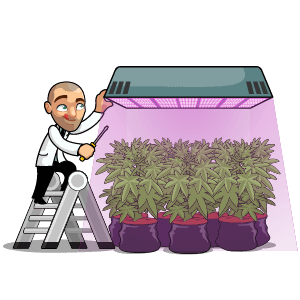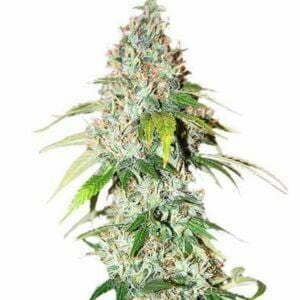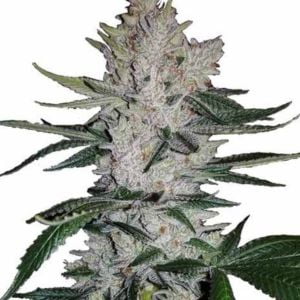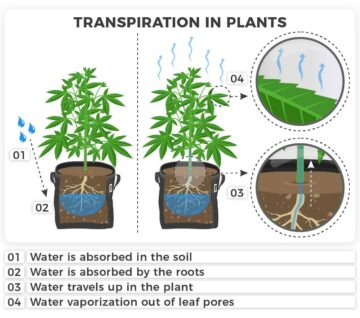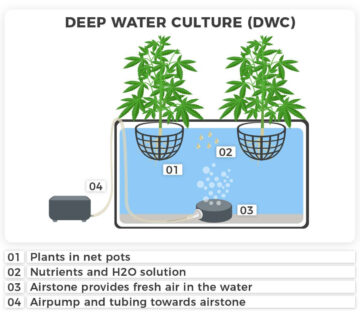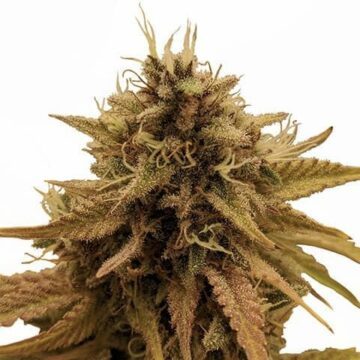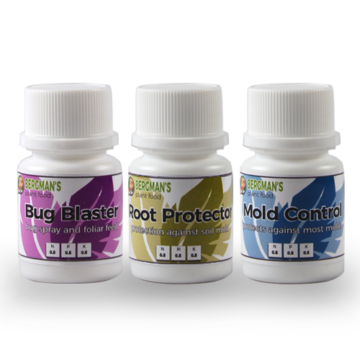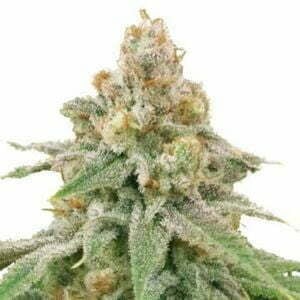Growing cannabis for seed is a passion project undertaken by plant-loving breeders of every caliber. Generation after generation, parent plants are selected and tracked, genetics are improved and stabilized through traditional farming methods, and the resulting traits are documented and enjoyed by growers and consumers. On the other hand, some folks grow seeds accidentally when stray pollen from a rogue plant enters the garden. Which seeds are good?
When talking about recognizing quality weed seeds, there are two main considerations:
- Quality of the future cannabis plant (genetic contents)
- Quality of the seed in terms of its characteristics “as a seed” (i.e., suitability for growing)
This article will assume you are already familiar with the genetic characteristics of the plant you’re planning to grow. It instead examines how to recognize high-quality weed seeds in a batch that you harvested, received as a gift, found in a bud, or bought from a reputable cannabis seed bank.
What do healthy cannabis seeds look like?
Healthy cannabis seeds are robust, oval-shaped, shiny, dark-colored, firm, and fully formed when harvested. By contrast, immature and unhealthy seeds appear stunted or shrunken on the non-pointy end (the “abscission” area, i.e., the base where the seed was attached to the flower) and may be light green or white.
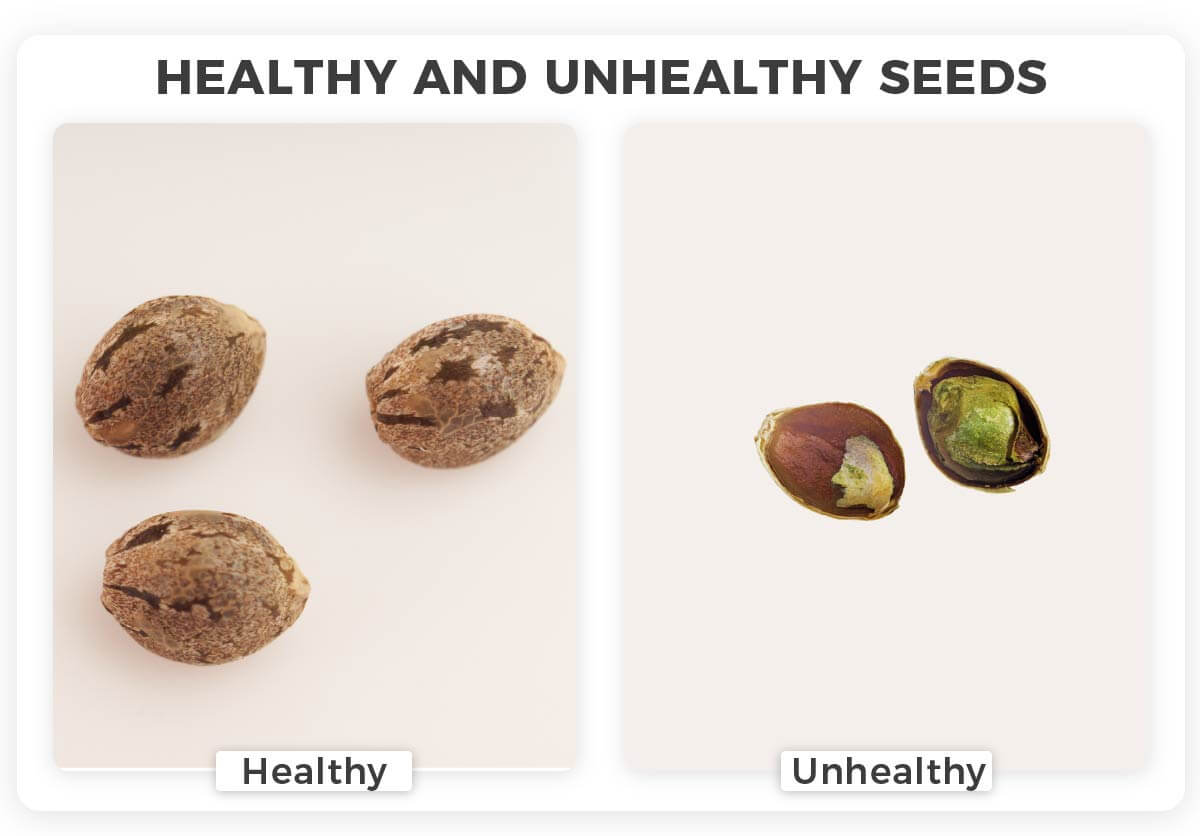

Cannabis seed identification myths
Almost all cannabis seeds available to consumers today are incredibly similar in appearance. This is due to how closely related the extreme majority of popular and commercially viable cannabis cultivars (strains, as we incorrectly call them) are compared to their wild and landrace ancestors.
In the 20th century, folks who wanted to grow and breed high-yielding, THC-rich, and fast-finishing (including autoflowering) cannabis under prohibition had a limited selection from which to identify and refine genetics.
For this reason, many easy-to-grow cannabis types share a lot of DNA. Sometimes nicknamed “OG” or “Old School,” stabilized family lines were (and continue to be) used by contemporary cultivators to experiment with hybrid forms that can improve or present unique spins on existing favorites.
Some people believe you can tell what you have just by looking at a seed. In fact, historically, folks have shared some creative ideas about identifying future plant characteristics based on the look or character of the seeds.
Let’s start by answering some questions you may have after hearing popular myths about the appearance of cannabis seeds and what people think it says about their quality:
Are light or dark weed seeds better?
It is fair to say that dark weed seeds are better for growing than light-colored seeds. This is because the dark color indicates the seeds have completed their journey from pollination to maturity. They have developed all of the protective shell structures necessary to survive until they find the right conditions to germinate and start the cannabis life cycle again.
On average, fiber cannabis types, which have been forcibly bred with low THC under hemp-growing laws in many parts of the world, tend to display slightly lighter shades of brown.
Can you recognize feminized or autoflower seeds?
Feminized and autoflower seeds look just like regular and photoperiod seeds. You cannot tell how long a seed will take to grow into a finished plant by looking at it.
Can you recognize if the resulting plant will be male or female?
It is impossible to recognize whether a resulting plant will be male or female by its seed’s observable qualities. Purchasing feminized seeds and ensuring they are kept separate from any other seeds in your collection is the only way to know your plants will grow to be female.
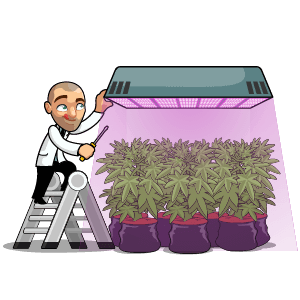

Shop Feminized Seeds
- Female plants for healthy bud
- Quality genetics, high yields
- All popular cultivars
Can you tell the strain by a cannabis seed?
You cannot tell the strain of cannabis by looking at a seed. A grower who produces seeds may notice they become familiar with how their seeds look when made by certain plants (as in the case of stabilized lineages). Still, the likelihood of identifying any given strain in, let’s say, a bag of random seeds is next to, if not entirely, impossible.
Can you even tell if a seed is indica or sativa?
You can’t tell if a seed is indica or sativa from its appearance.
Indica and sativa cannabis types grown for high cannabinoid content and easy cultivation are hybridized forms of plants selected for those features.
Unless (until?) you become as passionate about (might I even suggest “obsessed with”?) growing cannabis as some of us around here, most of the good seeds you will encounter in your life as a grower of high-quality cannabis will look very similar.
Should a cannabis seed have (tiger) stripes?
A lack of stripes is not a good reason to downgrade a cannabis seed, but the presence of stripes or mottling does indicate that its internal structures were mature at harvest.
Seed striping in cannabis is related to an evolutionary need for camouflage, protecting the seeds dropped by plants from being eaten (by birds, mainly). The genes of a subtype can retain this trait, but it may also not be part of that particular variety’s DNA expression.
The stripes on a cannabis seed are among the last characteristics to develop, and the layer in which they appear can sometimes be “sloughed off” in the collection and handling process.
There is no reason to insist that a cannabis seed should have stripes to be a good quality seed.
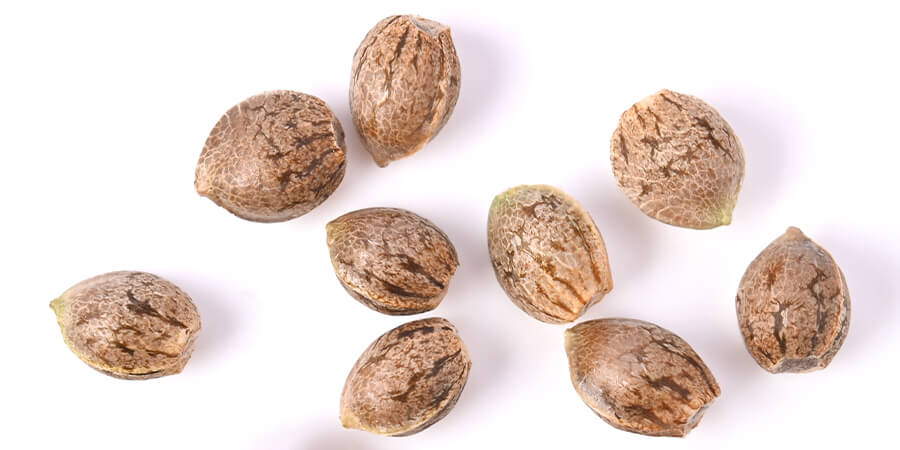

Does cannabis seed size matter?
Cannabis plant breeding (outside of “hemp” grown specifically for fiber) has created varieties that consistently make larger and more uniform seeds.
Larger seeds serve the interests of growers seeking more protein and oil from the seed. In the absence of pollination, this portion of the plant’s energy goes to creating the cannabinoid-rich oils found in and on the unseeded, tightly stacked, and plump buds.
The relative size of a cannabis seed does not matter when it comes to its eventual size: large cannabis seeds will not inherently make bigger plants.
What color should a good weed seed be?
Color is one important characteristic that seed growers use to evaluate whether their seeds are good enough to sell or to plant for the next crop. The color of the seed indicates its maturity at harvest. There is only a short window of time during which the contents of the seed are fully formed, and the outer shell of the seeds is not. For this reason, a good weed seed is generally dark in color.
Light or white cannabis seeds
Light or white cannabis seeds were pollinated closer to their harvest date than their counterparts on the same plant. As it takes a minimum of four, but usually more, weeks for cannabis seeds to become mature after pollination, the seed producer is occasionally forced to harvest their plants before some of the seeds have fully developed.
White or light-colored cannabis seeds can be just as viable as their dark-brown counterparts. However, they are more vulnerable to storage climate conditions (e.g., temperature fluctuations, humidity, dryness) and infection.
If you have white or light cannabis seeds, attempt to germinate them during the first growing season after you acquired them. Under ideal conditions, older white seeds may still germinate, but you are likely to see a reduction in healthy seedling rates the longer you wait to grow them.
Dark or black cannabis seeds
Dark or black cannabis seeds are ready to propagate their genetics at the time of harvest. High-quality weed seeds are usually dark brown, gray, or black in color.
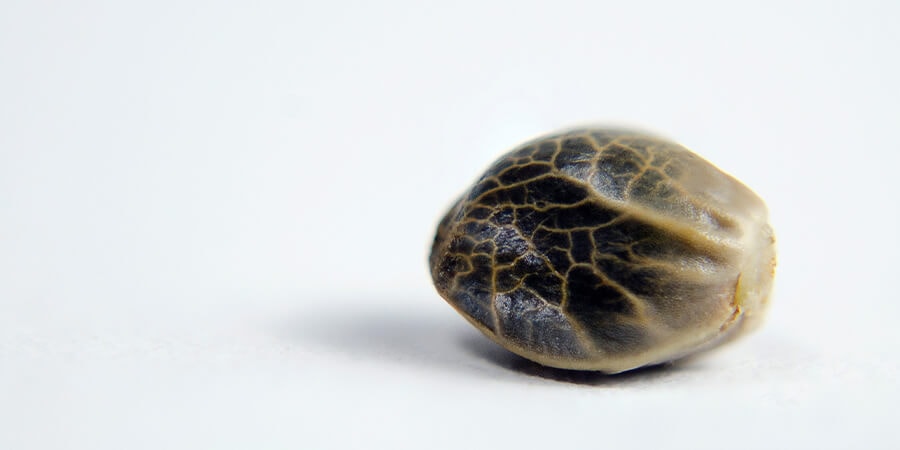

Green cannabis seeds
A greenish-white cannabis seed is probably not completely formed inside, and a green color is a strong indicator it will not grow at all.
Cannabis seeds can retain a green tint until completely formed and dry in the buds. When they are complete, they are ready to withstand the period between the plant’s natural seasons of regrowth.
Sometimes, seeds are still slightly green because they are very fresh. A greenish-colored brown cannabis seed will usually darken as it dries, to the point where the green color fades or disappears. A green hue on cannabis seeds that was otherwise quite dark when the plants were cut down is not usually a concern.
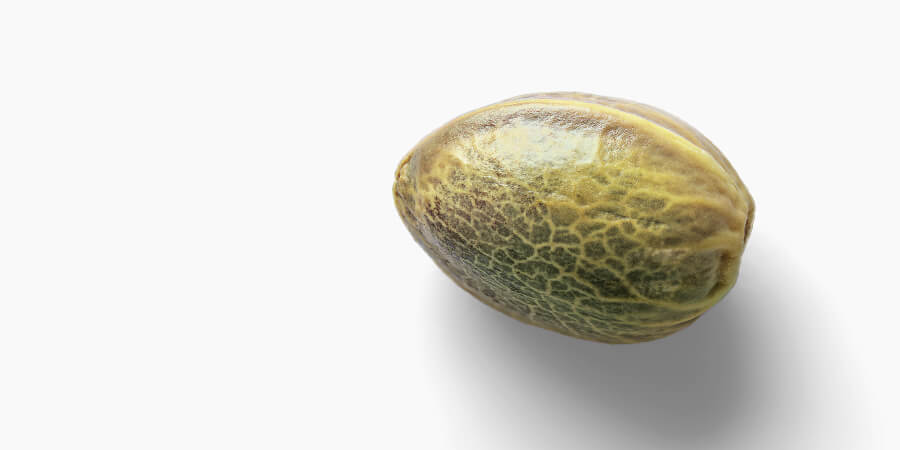

How can you tell the quality of weed seeds?
You can tell the quality of weed seeds by using the same evaluation criteria as the growers who made them. In commercial seed production, no matter what type of plant is being grown, a uniform harvest of high-quality seeds is the goal.
When all the seeds in a pack look almost identical, the grower likely had a good handle on the variables to make vigorous seeds with high germination rates and a reasonable storage lifespan.
Look for fully-matured, oval-shaped seeds with a dark color and firm shell, with no signs of damage.
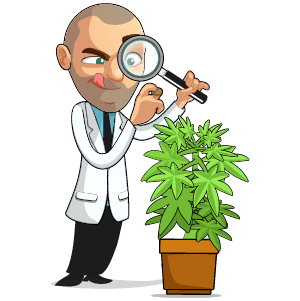

Shop High-Quality Seeds
- High-quality, hand-picked seeds
- The best genetics out there
- Delivery and germination warranty
Is the firmness of a marijuana seed an indicator of quality?
The firmness of a seed, which in agricultural regulations is called its “resistance to compression,” is one of the measurable indicators of maturity. Although you may be able to crush good quality seeds if you try (so don’t try too hard!), a seed’s firmness is an indicator that you have a good quality cannabis seed.
Older seeds can have thick shells.
Seeds with very thick outer shells make it hard for water to penetrate them. The thick outer shell of an older seed may have preserved its viability but may also make your germination period longer.
Seeds from different batches, harvested from differently mature parts of the same plants, or with different genetics can have varied shell thicknesses. Regardless, ideal germination conditions should be maintained even if the seeds of one type or source have already ‘popped’ (sprouted) while others lag behind.
Dry or brittle seeds
Seeds subjected to overdrying lose their ability to support themselves through germination. Dry or brittle seeds are considered poor quality.
What if your seed has a damaged or scratched shell?
If your seed has a damaged or scratched shell, you may consider this a lower-quality weed seed. Any damage sustained by the seed’s protective coating makes it vulnerable to the elements, compromising the viability of the contents.
Don’t throw it out, though. A scratched shell is not a reason to discard the seed without attempting to grow it. However, you should lower your expectations for successful germination.
Seed identification has great potential.
The future may hold fascinating new developments in seed quality and type identification. There is a resurging interest in sourcing, identifying, and protecting global cannabis genetic diversity.
Using cannabis seeds purchased at a market in Thailand in 2022, a group of scientists recently released the first known open-access dataset containing four thousand images for machine learning (AI-training) purposes.
With researchers all over the world studying and sharing information about cannabis and its seeds, new data may come out that will put some of the old myths to rest (or perhaps reveal exciting insights!).
Conclusion
Today, as growers, our ability to estimate the quality of seeds we intend to grow comes down to a few key aspects.
Observations of the seed characteristics and general appearance.
Does it look like it was mature when collected? Was it protected from damage throughout its post-harvest journey from the parent plant to the garden?
Trust in the seed producer.
Do you trust your source, especially their skills in cultivating, harvesting, and preserving high-quality cannabis seeds from healthy plants? Do you trust their quality control standards and guarantees?
Experience.
What data collection, documentation, and analysis of our own experiences growing high-quality cannabis seeds do you have? What can you tell from what you’ve experienced?
These are the three things you should always consider when evaluating cannabis seeds. However, when you start with brown, firm, uniform, and not visibly damaged seeds, you give yourself the best chance at success. For high-quality marijuana seeds with guaranteed germination, visit ILGM.com.
Learn more about cannabis seeds
Be sure to check out the following articles if you want to learn more about cannabis seeds:
Once you’ve got your hands on some high-quality cannabis seeds, don’t forget to download Robert’s free Marijuana Grow Bible and check out the ILGM Grow Support Forum to get growing!
- SEO Powered Content & PR Distribution. Get Amplified Today.
- PlatoData.Network Vertical Generative Ai. Empower Yourself. Access Here.
- PlatoAiStream. Web3 Intelligence. Knowledge Amplified. Access Here.
- PlatoESG. Carbon, CleanTech, Energy, Environment, Solar, Waste Management. Access Here.
- PlatoHealth. Biotech and Clinical Trials Intelligence. Access Here.
- Source: https://www.ilovegrowingmarijuana.com/growing/stages/recognizing-quality-weed-seeds/
- :has
- :is
- :not
- :where
- 1
- 2022
- 2023
- 20th
- 300
- a
- ability
- Able
- About
- acquired
- After
- again
- Agricultural
- All
- almost
- already
- also
- Although
- always
- among
- an
- analysis
- and
- any
- appear
- ARE
- AREA
- around
- article
- articles
- AS
- aspects
- assume
- At
- attached
- attempt
- attempting
- available
- average
- bag
- Bank
- base
- based
- BE
- because
- become
- been
- before
- behind
- being
- believe
- BEST
- Better
- between
- bigger
- Birds
- Black
- bought
- Bred
- BREED
- brown
- Bunch
- but
- by
- call
- called
- CAN
- Cannabinoid
- cannabis
- cannot
- case
- Century
- certain
- Chance
- character
- characteristic
- characteristics
- check
- Climate
- closely
- closer
- collection
- color
- COM
- come
- comes
- commercial
- commercially
- compared
- comparison
- complete
- Completed
- completely
- compromising
- Concern
- conditions
- Consider
- considerations
- considered
- consistently
- Consumers
- contemporary
- content
- contents
- continue
- contrast
- control
- created
- Creating
- Creative
- criteria
- crop
- cultivation
- Cut
- cycle
- damage
- Dark
- darker
- data
- Date
- develop
- developed
- developments
- different
- Display
- Diversity
- dna
- do
- documentation
- documented
- does
- Dont
- down
- Downgrade
- download
- dropped
- dry
- due
- during
- e
- easy
- elements
- encounter
- end
- energy
- enjoyed
- enough
- ensuring
- Enters
- entirely
- especially
- estimate
- evaluate
- evaluating
- evaluation
- Even
- eventual
- Every
- Examines
- example
- exciting
- existing
- expectations
- experienced
- Experiences
- experiment
- expression
- extreme
- fact
- Fades
- fair
- familiar
- family
- farming
- fascinating
- Favorites
- Features
- female
- few
- Find
- Firm
- First
- flower
- fluctuations
- following
- For
- forced
- formed
- forms
- found
- four
- Free
- fresh
- from
- fully
- future
- Garden
- General
- generally
- generation
- Genetics
- get
- gift
- Give
- given
- Global
- goal
- Goes
- good
- got
- gray
- great
- Green
- Group
- Grow
- growers
- Growing
- grown
- guaranteed
- had
- hand
- handle
- Handling
- Hands
- Hard
- harvest
- Harvesting
- Have
- healthy
- hearing
- here
- High
- high-quality
- his
- historically
- hold
- How
- How To
- However
- HTTPS
- Hybrid
- i
- ideal
- ideas
- identical
- Identification
- identify
- identifying
- if
- images
- important
- impossible
- improve
- improved
- in
- Including
- incorrectly
- incredibly
- indicate
- indicates
- Indicator
- Indicators
- infection
- information
- inherently
- inside
- instead
- intend
- interest
- interests
- internal
- into
- IT
- ITS
- journey
- jpg
- just
- kept
- Key
- known
- Lack
- large
- larger
- Last
- Laws
- layer
- LEARN
- Life
- lifespan
- light
- lighter
- like
- likelihood
- likely
- Limited
- lines
- Long
- longer
- Look
- look like
- looking
- lose
- Lot
- Low
- lower
- machine
- made
- Main
- mainly
- Majority
- make
- MAKES
- many
- marijuana
- Market
- Matter
- mature
- maturity
- max-width
- May..
- methods
- might
- minimum
- more
- most
- Natural
- necessary
- Need
- New
- next
- no
- Notice..
- occasionally
- of
- Oil
- oils
- Old
- older
- on
- ONE
- only
- or
- Other
- Others
- otherwise
- our
- out
- outside
- over
- own
- Pack
- part
- particular
- parts
- passion
- passionate
- People
- perhaps
- period
- planning
- plant
- plants
- plato
- Plato Data Intelligence
- PlatoData
- Point
- Pollen
- poor
- Popular
- potential
- presence
- present
- preserving
- probably
- process
- produce
- producer
- produces
- Production
- Prohibition
- project
- protected
- protecting
- Protective
- Protein
- purchased
- purchasing
- purposes
- put
- qualities
- quality
- Questions
- random
- Rates
- ready
- reason
- reasonable
- received
- recently
- recognize
- recognizing
- reduction
- refine
- Regardless
- regular
- regulations
- related
- relative
- released
- researchers
- REST
- resulting
- retain
- reveal
- right
- robust
- same
- say
- says
- School
- scientists
- Season
- seasons
- see
- seed
- seeds
- seeking
- selected
- selection
- sell
- separate
- serve
- Share
- shared
- sharing
- Shell
- Short
- should
- Signs
- similar
- Size
- skills
- So
- some
- Source
- Sourcing
- specifically
- spins
- stacked
- standards
- start
- Still
- storage
- Strains
- Stray
- Stripes
- strong
- structures
- Studying
- success
- successful
- suggest
- suitability
- support
- sure
- survive
- sustained
- Take
- takes
- talking
- tell
- terms
- Thailand
- than
- that
- THC
- The
- The Future
- the world
- their
- Them
- themselves
- There.
- they
- things
- Think
- this
- those
- though?
- thousand
- three
- Through
- throughout
- Tiger
- tightly
- time
- Title
- to
- today
- too
- traditional
- Trust
- try
- two
- type
- types
- under
- unique
- until
- us
- use
- used
- using
- usually
- variables
- very
- viability
- viable
- Visit
- Vulnerable
- wait
- want
- wanted
- was
- Water
- Way..
- we
- weed
- Weeks
- were
- What
- when
- whether
- which
- while
- white
- WHO
- Wild
- will
- window
- with
- without
- world
- you
- young
- Your
- yourself
- zephyrnet

